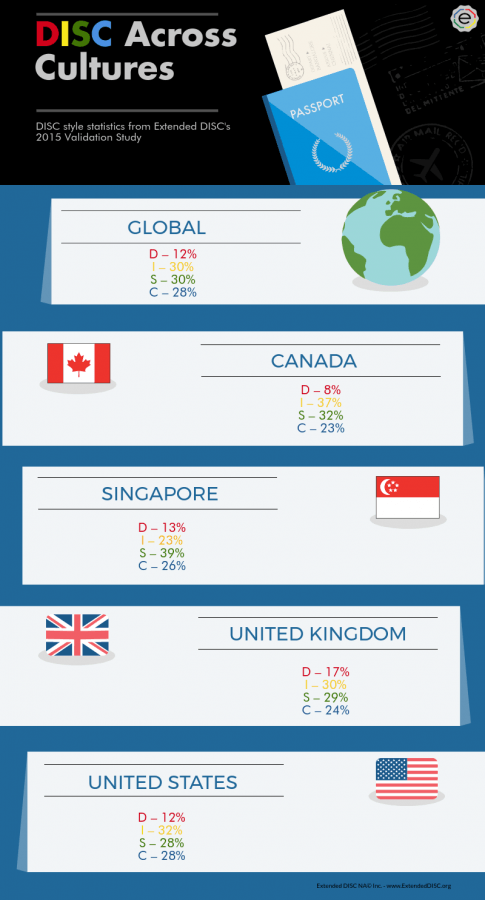As a DISC trainer, I've been asked if DISC applies across different cultures. If so, how does it correlate to culture?
There is a link between DISC and cultures, but it may not be as clear as we think. Does where you live or your cultural background influence your DISC profile? Are the behaviors that we observe in all D-styles similar and recognizable? Is there any difference between a D-style in Singapore versus a D-style in the U.S.? Let's start from the beginning with the DISC theory.
How the DISC Theory and DISC Assessments Works
 DISC measures your most comfortable behaviors or how you naturally prefer to do things. The DISC theory itself does not judge behaviors as right or wrong or good or bad. There are no styles that are better or worse. Each of four DISC styles simply has similarities and differences.
DISC measures your most comfortable behaviors or how you naturally prefer to do things. The DISC theory itself does not judge behaviors as right or wrong or good or bad. There are no styles that are better or worse. Each of four DISC styles simply has similarities and differences.
In order to create a persons' DISC profile, we start by collecting data from his/her DISC assessment. The process of collecting data is purely based on statistics and thus, culture-free. How many times does the person select answers based on one DISC style over the other DISC styles? If there is a clear pattern of response that aligns with at least one DISC style, then a valid DISC profile is generated. An invalid result indicates the person was not able to answer in a clear enough pattern to identify at least one DISC style.
The key to valid DISC profile results is to find key words that cause the preferred style of person to respond in a desired way. The intent of the questionnaire is to find out how the person compares to other people within the same culture. Translating the questionnaire is therefore the key issue; it cannot always be a direct translation of the language. In order to support the findings, a validation study is needed to check if the tool can really identify the different behavioral traits with a culture. That's why we recommend that our clients take the DISC questionnaire in their most comfortable native language, even if they are multi-lingual. Regardless of the language clients use to answer, the results will always default into your preferred language. For example, if your client chooses to answer in Mandarin Chinese, you can still receive the results in English.
What is the Correlation between DISC and Cultures?
 Once the data is collected and the DISC profile is generated, it can be applied to specific styles and settings. The style areas may include communication, leadership, and decision-making. To be able to interpret the data, you need to have an understanding of DISC; especially the context where the information is applied. This part is culture bound and thus, requires an understanding of the culture.
Once the data is collected and the DISC profile is generated, it can be applied to specific styles and settings. The style areas may include communication, leadership, and decision-making. To be able to interpret the data, you need to have an understanding of DISC; especially the context where the information is applied. This part is culture bound and thus, requires an understanding of the culture.
In other words, you don't need to know exactly how the data is produced, but you need to understand the tool is based on DISC. You do need to understand the environment where the results are being applied. If someone is identified as a D profile, it means that when he/she took the DISC questionnaire the person prefers the D-style responses. But, what does it mean in Singapore for example? This is something the DISC tool cannot determine. The DISC results only indicate that compared to the other Singaporeans this person is more D-style. It is then up to those who understand the culture of Singapore to determine what exactly D-style means and how D-style behaviors are identified.
